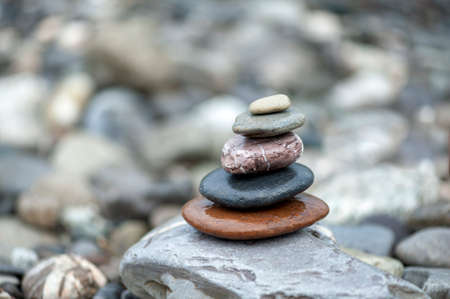1. Introduction: Embracing Harmony in Every Corner
Picture a crisp morning in a typical British city, where even the smallest patio or balcony offers an opportunity for transformation. In our fast-paced lives, these petite outdoor nooks become precious sanctuaries—places to breathe, reflect, and reconnect. The art of Feng Shui, with its ancient wisdom of harmonising energy, invites us to see beyond mere square footage and instead notice the flow of life itself. By blending Feng Shui principles with plants perfectly suited to the UK’s distinctive climate, it’s possible to turn even the most modest garden, terrace, or courtyard into a vibrant extension of home and spirit. Imagine stepping outside your back door to find a space that not only delights the senses but also restores balance—a green retreat crafted for British weather and lifestyle, where every carefully chosen leaf and stone helps channel positivity and peace.
2. Foundations of Feng Shui for Outdoor Nooks
Transforming a compact British balcony, patio, or courtyard into a harmonious sanctuary begins with understanding core Feng Shui principles. At its heart, Feng Shui is about nurturing the flow of energy—known as “chi”—so that it meanders gently through your space, invigorating each corner with balance and vitality. In the context of UK homes, where outdoor areas may be modest and enclosed, attention to flow, balance, and orientation becomes essential. Imagine your garden as a living canvas: where you place each plant and object determines whether chi will gather in gentle pools or become stifled in stagnant corners.
Flow: Guiding Chi Through Your Space
In the often-cozy settings of British outdoor nooks, ensuring smooth chi movement is vital. Pathways should curve softly rather than run in straight lines, inviting energy to linger and nourish plants and people alike. Even on a tiny balcony or urban terrace, arranging pots or stepping stones in gentle arcs can work wonders.
Balance: Creating Yin and Yang
Feng Shui thrives on harmony between yin (softness, shade) and yang (light, activity). An overabundance of one leads to imbalance—a shadowy courtyard might feel dampened, while an exposed patio could feel harsh. Strive for equilibrium by blending textures, heights, and colour palettes suited to the UK climate. For instance, pair soft-leaved ferns with spiky ornamental grasses or alternate light-reflecting pebbles with dark slate tiles.
Orientation: Harnessing Nature’s Gifts
Each direction holds unique energy in Feng Shui. In Britain’s variable weather, consider the sun’s path and prevailing winds:
| Direction | Feng Shui Element | UK Consideration |
|---|---|---|
| North | Water | Suits shade-loving plants; use mirrors to brighten dark corners. |
| East | Wood | Catches morning sun; ideal for fresh herbs like mint or chives. |
| South | Fire | Warmest aspect; nurture flowering plants for vibrant energy. |
| West | Metal | Mild evening light; perfect for relaxing zones or metal accents. |
Tapping Into British Traditions with Feng Shui Wisdom
The British love for gardening finds new depth when interwoven with Feng Shui’s ancient wisdom. By embracing these foundations—flow that welcomes movement, balance that soothes the senses, and orientation that celebrates natural rhythms—you can revitalise even the smallest outdoor nook. Let every breeze and birdsong become part of your story as you transform your space into a soulful retreat attuned to both local culture and universal harmony.

3. Choosing UK-friendly Greenery for Positive Energy
In the heart of Britain’s ever-changing seasons, curating a small outdoor sanctuary calls for both a gardener’s intuition and a Feng Shui enthusiast’s wisdom. The key lies in selecting plants that not only flourish in the UK’s unique climate but also resonate with auspicious energy—inviting peace, prosperity, and renewal into your space.
Lavender: Calm Amidst British Breezes
The gentle purple haze of lavender is a familiar sight across English cottage gardens, its fragrance weaving through summer air. In Feng Shui, lavender symbolises tranquility and healing; placing it near seating areas or entryways diffuses stress and encourages restful interactions. Hardy and drought-tolerant, it thrives in sunny borders or pots—a nod to both British tradition and energetic harmony.
Ferns: Purifiers Rooted in Tradition
Beneath ancient oaks and along shaded stone walls, ferns unfurl their delicate fronds. These native woodland dwellers are prized in Feng Shui for their purifying qualities, cleansing both air and atmosphere of stagnant chi. Ferns such as the soft shield fern or lady fern suit damp British corners, effortlessly blending with local flora while infusing spaces with refreshing life force.
Bay Laurel: Evergreen Prosperity
No British kitchen garden is complete without the dignified bay laurel. Revered for centuries—from Roman victory wreaths to Sunday roasts—bay carries strong symbolism of abundance and protection. In Feng Shui practice, a potted bay by your doorway invites prosperity and shields against negative influences. Its glossy leaves withstand cool winters, making it a steadfast companion throughout the year.
Blending Native Sensibilities with Eastern Wisdom
British gardening traditions celebrate structure and seasonality—think clipped box hedges or bursts of spring daffodils. Integrating these elements with Feng Shui principles creates a layered tapestry of intention and beauty. For instance, clustering aromatic herbs near windows enhances both culinary delight and positive energy flow; meanwhile, climbing roses on trellises draw uplifting chi skyward. By marrying UK-suited plants with mindful arrangement, even the smallest terrace or courtyard becomes a haven where nature’s cycles support your well-being.
4. Practical Design Ideas: Infusing Spirit into Small Spaces
Step into your little patch of the outdoors, whether its a mist-veiled London terrace or a sun-dappled Yorkshire courtyard, and let the ancient wisdom of Feng Shui breathe life and harmony into every corner. In the UK, where weather and space often conspire to keep gardens modest, it’s all the more enchanting to weave magic from the everyday. Here’s how you can enchant your small outdoor space with practical design tips rooted in both local character and Feng Shui principles.
Arranging Pots and Planters with Purpose
Imagine terracotta pots lining a winding brick path in a Cornish cottage garden, or sleek slate planters set along a balcony rail overlooking bustling city streets. According to Feng Shui, the placement of these containers is crucial—group plants in odd numbers for natural energy flow, and position them to gently guide movement through your space. Use heavier planters at corners to anchor energy (Chi) and lighter ones to draw the eye towards focal points like a petite water feature or an old wrought-iron bench.
| Container Type | Suggested Placement | UK-suited Plant Examples |
|---|---|---|
| Terracotta Pot | Entryway for grounding Chi | Lavender, Rosemary |
| Ceramic Planter | Balcony corners for stability | Boxwood, Ferns |
| Window Box | Sills or railings for gentle flow | Ivy, Primrose |
| Wooden Trough | Against walls to soften boundaries | Heather, Thyme |
Tiny Furniture, Big Energy Shifts
Select furniture that feels light yet purposeful—a bistro table nestled beneath a climbing rose in Kent or a single weathered wooden chair facing the morning sun in Edinburgh. Curved lines are favoured in Feng Shui; round tables encourage conversation and gentle Chi circulation. Avoid clutter by choosing foldable pieces or built-in benches with storage, which keep energy (and rain boots) neatly tucked away.
Creating Zones of Tranquillity and Flow
In even the smallest garden nooks, define distinct zones: a reading corner under cascading wisteria for introspection, or a social spot framed by potted hydrangeas for tea with friends. Mark pathways with river stones or reclaimed bricks—each step echoing centuries of British garden tradition—and let their curves mimic the meandering flow of water, which invites prosperity according to Feng Shui lore.
The Finishing Touches: Accents & Local Magic
Add subtle accents such as copper wind chimes to lift stagnant air on misty mornings, or a mossy stone birdbath that reflects fleeting English sunlight. Even a miniature herb spiral can become a centrepiece of intention and scent—rosemary for protection, mint for vibrancy—all thriving within their sheltered UK microclimate. Through thoughtful arrangement and mindful choice, your small outdoor sanctuary will pulse with spirit and serenity, no matter how capricious the British weather may be.
5. Mindful Accents: Water Features, Stones and Ornaments
In the gentle embrace of a British garden, even the smallest outdoor space can transform into a sanctuary of movement and meaning through carefully chosen accents. Introducing a petite water feature—a ceramic bowl with softly trickling water or a slender stone fountain—brings not only the soothing sound of flowing energy but also invites vitality as encouraged by Feng Shui. This subtle movement enlivens the air, echoing the gentle rain or mist that so often graces UK mornings, encouraging both reflection and renewal.
Natural stones, whether smooth pebbles from a Cornish beach or rugged fragments reminiscent of the Scottish Highlands, ground your space in earth’s stability. Placing these stones at key points—perhaps flanking a pathway or clustering near lush ferns—creates visual anchors. Each stone tells its own story, whispering tales of ancient landscapes and quiet endurance, and their presence helps balance energetic flow, inviting calm and resilience into your garden’s narrative.
Ornaments inspired by British heritage—such as a discreet wrought-iron robin perched on a fence, a weathered sundial with mossy edges, or an aged teacup tucked among lavender—add layers of personality and local charm. These touches are not mere decoration; they become touchstones for memory and imagination. As you walk through your small garden, each accent draws forth emotions and images: perhaps childhood afternoons spent in grandparent’s gardens or wistful daydreams inspired by classic English novels.
Together, these mindful elements cultivate more than just beauty. They create a sensory tapestry where water sings, stones listen, and ornaments tell stories—the very heart of Feng Shui brought to life within the uniquely British context. In this way, your compact outdoor retreat becomes not only visually harmonious but also rich with layers of intention and spirit, gently shifting energies to uplift all who linger there.
6. Seasonal Connection: Tuning into the British Year
In the heart of every British garden lies a quiet story, whispered by the ever-changing seasons. Embracing Feng Shui within your small outdoor space means honouring these cycles—each with its unique energy, colour, and rhythm. Imagine your patio or balcony as a living canvas, shifting in harmony with Britain’s gentle spring rains, golden summer evenings, crisp autumnal breezes, and the hushed promise of winter frost.
Spring Awakening: A Fresh Start
As the first signs of spring emerge—daffodils nodding beneath pale sunlight—it is time to invite renewal. Choose UK-suited plants such as primroses, hellebores, and bluebells to breathe new life into corners, filling them with Chi that feels hopeful and invigorating. Sweeping away old leaves and gently re-potting invites positive flow and sets intentions for growth.
Summer Abundance: Joyful Vitality
Come summer, let your space bask in abundance. Lavender and rosemary thrive in pots or borders, their scents swirling on warm air and attracting bees—a sign of vibrant energy according to Feng Shui. Use seating areas to meditate at sunrise or share laughter with friends at sunset, nurturing connections under long British evenings.
Autumn Reflection: Letting Go Gracefully
With autumn’s arrival, fiery foliage from acer trees or cotoneaster reminds us of nature’s wisdom in letting go. Rake fallen leaves mindfully, thanking them for their cycle. Add pots of hardy heather or ornamental grasses to maintain structure while acknowledging this season’s yin qualities—inviting stillness and introspection.
Winter Renewal: Quiet Contemplation
Even in winter’s chill, your space holds potential for mindful renewal. Evergreens like holly or box provide shelter for wildlife and keep energy flowing. Solar lanterns or string lights cast a gentle glow, transforming darkness into a sanctuary for reflection—a true act of self-care rooted in both British tradition and Feng Shui principles.
Nurturing Mindfulness Year-Round
By tuning into each season’s mood with UK-suited plants and intentional design choices, you foster not only visual beauty but also a deeper connection to place and self. This cyclical approach transforms even the smallest outdoor spaces into soulful retreats—where every shift in weather is an invitation to renew your spirit and embrace mindful living.
7. Conclusion: Crafting Your Own Sanctuary
As you stand at the threshold of your transformed small outdoor space, take a gentle breath and sense the subtle shift—a harmony woven from ancient Feng Shui principles and the unmistakable charm of British flora. This is more than mere landscaping; it’s an invitation to embark on a personal journey, where every plant, stone, and winding path becomes an expression of your unique spirit. Whether you have a petite patio in Leeds, a shaded corner in Edinburgh, or a sunlit balcony in Bristol, blending time-honoured wisdom with the local character infuses each nook with peace and possibility. Let your sanctuary evolve with the seasons, adapting gracefully as you do. In this mindful curation, you are not only designing a garden—you are crafting a haven for reflection, rejuvenation, and quiet joy right outside your door. Embrace the adventure ahead: nurture your space with intention and let it become a living testament to balance and belonging in the heart of Britain.


